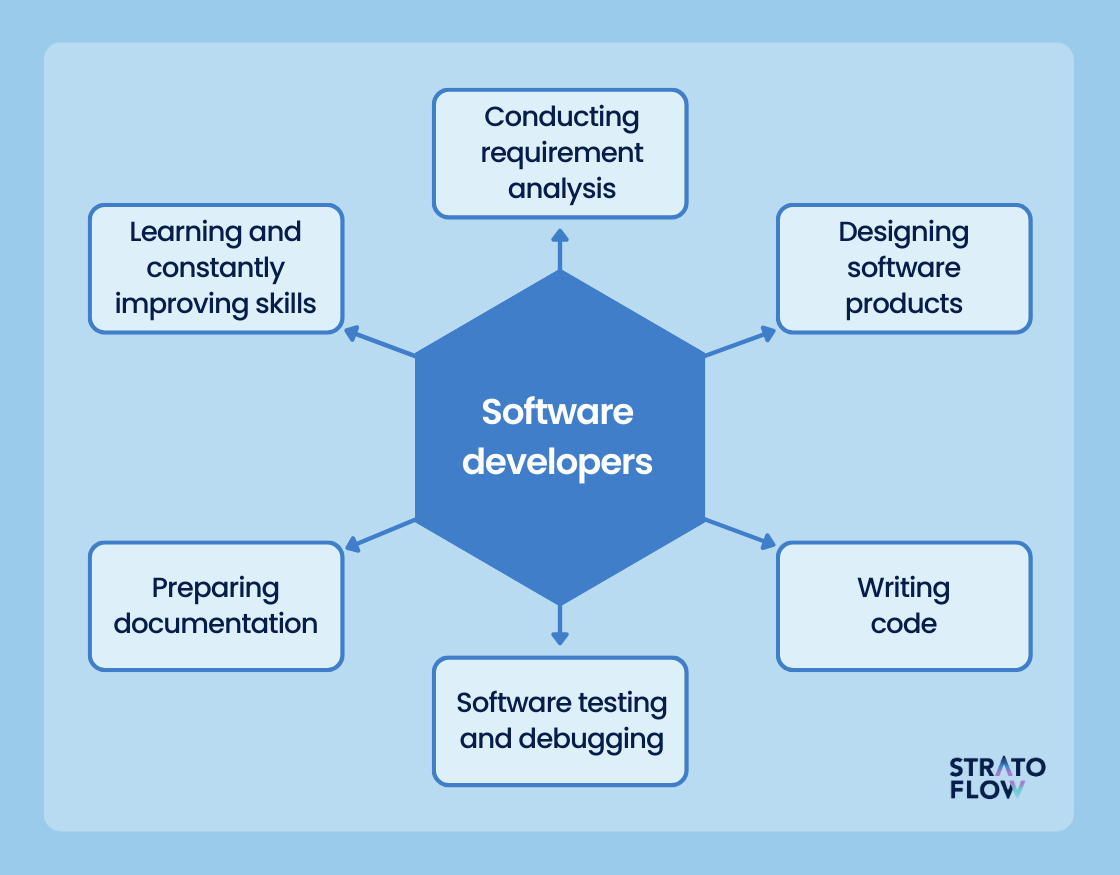The Benefits of a Dedicated Development Team in a Competitive Market
The Benefits of a Dedicated Development Team in a Competitive Market
Blog Article
Dedicated Developers vs. In-House Teams: Which Is Right for You?
The decision between utilizing devoted developers and maintaining an in-house group is a considerable one that can impact the trajectory of your tasks and general organization approach. Devoted designers give a level of versatility and specialized knowledge that can be useful for particular, temporary efforts. Alternatively, in-house teams add to a cohesive company culture and a nuanced understanding of lasting objectives. By examining crucial aspects such as budget plan, task range, and desired control, you can much better establish which method straightens with your organizational needs. However, the implications of this option expand beyond immediate results-- take into consideration the wider influence on your company landscape.
Recognizing Dedicated Designers
The growing need for specialized abilities in the tech market has actually caused the introduction of devoted developers as a viable solution for lots of organizations. These professionals are normally acquired on a task basis, enabling companies to utilize particular experience without the long-term commitment connected with permanent hires. Dedicated programmers are frequently embedded within a customer's group, providing versatility and scalability to fulfill job requirements.
This version allows organizations to access a global ability swimming pool, which is especially helpful in a swiftly developing technical landscape. Dedicated developers can be sourced from various geographical areas, making certain that business can locate the right capability at competitive prices. They typically bring a riches of experience and expertise, having worked with varied projects across different industries.
Moreover, devoted designers can concentrate solely on the jobs handy, improving productivity and performance. They are equipped to integrate seamlessly right into existing workflows, collaborating closely with in-house teams to attain task goals. This technique not only minimizes the worry of recruitment and training yet likewise permits organizations to continue to be agile, adjusting quickly to altering market needs and technical innovations.
Advantages of In-House Teams

In addition, in-house teams tend to have a much deeper understanding of the firm's goal, values, and objectives. This positioning can boost worker involvement and motivation, as team members really feel much more linked to their work and the company's success. Additionally, having a committed in-house team enables better placement of approaches and goals, as these members are constantly concentrated on the company's priorities.
In-house teams likewise help with quicker decision-making processes, as they can respond more quickly to changes and difficulties. The well-known partnerships and experience with company protocols permit for structured operations and decreased miscommunication. Ultimately, the mix of a cohesive culture, positioning with business goals, and efficient communication makes in-house teams a useful property for lots of companies, specifically those looking to cultivate lasting development and development.
Expense Factors To Consider
When reviewing cost factors to consider, both in-house teams and specialized programmers existing distinct monetary ramifications for organizations. Engaging specialized designers typically includes a pay-per-project or hourly price design, which can be economical for services with varying project demands. This strategy allows for adaptability in scaling sources up or down, ensuring that business just pay for the solutions they need.
In contrast, in-house groups entail repaired expenses, consisting of salaries, benefits, and overhead expenses such as office and devices. While this model uses higher control and prompt accessibility of resources, it might bring about higher long-lasting costs, especially if the workload does not justify a full-time personnel.
Furthermore, companies should consider the covert prices connected with employment and training of internal employees, which can additionally strain budget plans. In some instances, go to my blog the moment and resources invested on managing an internal group can interfere with the company's core business objectives.

Project Monitoring and Adaptability
Project administration and versatility are vital aspects that affect the choice in between in-house groups and specialized designers. Committed programmers normally offer a high degree of flexibility, permitting companies to range sources up or down based on job demands. This agility can be specifically beneficial for companies experiencing varying work or those seeking to introduce rapidly. Committed groups typically have actually established processes for handling projects successfully, leveraging details techniques like Agile or Scrum, which help with iterative progress and versatility.

Inevitably, the selection in between internal groups and committed designers rests on the desired degree of versatility and the specific job monitoring demands. Companies need to examine their functional characteristics, task complexity, and source schedule to identify which alternative straightens best with their tactical purposes.
Making the Right Choice
Choosing the best growth approach-- specialized designers or in-house groups-- calls for a careful analysis of numerous variables that line up with a business's strategic objectives. offshore software development. Initially, consider the nature of the job. Dedicated developers might be more ideal if it requires specialized abilities Look At This or a fast scale-up. On the other hand, in-house groups can give much better continuity and integration with existing personnel.
Next, review your budget plan. Dedicated designers frequently provide an affordable option for temporary tasks, while internal teams may incur higher lasting costs because of wages, benefits, and overhead expenses. Analyze the level of control and cooperation preferred; internal teams typically cultivate more powerful communication and positioning with company society.
In addition, think about the time framework. If prompt results are needed, dedicated designers can be onboarded rapidly, whereas building an internal team takes time for employment and training. Ultimately, evaluate the long-lasting vision of your company. If continuous development is essential, spending in an internal team might yield much better returns in time. Ultimately, the decision rests on a comprehensive evaluation of these variables, guaranteeing placement with your company's total goals and functional needs.
Verdict
Finally, the choice in between devoted developers and in-house teams hinges on project requirements and organizational purposes. Dedicated designers provide adaptability and specialized proficiency, making them suitable for temporary efforts. Conversely, internal groups grow a cohesive society and much deeper positioning with long-lasting goals. Careful assessment of budget plan constraints, job timelines, and wanted control degrees is necessary for figuring out one of the most ideal technique, ensuring placement with tactical top priorities and functional efficiency.
The decision in between using devoted programmers and preserving an internal team is a substantial one that can affect the trajectory of your jobs and total company strategy.Job monitoring and versatility site are critical aspects that affect the selection between devoted designers and internal groups. software development staff augmentation.In comparison, internal teams may succeed in preserving a consistent job administration structure due to their familiarity with the company's culture and long-lasting goals. Committed designers frequently present a cost-effective remedy for short-term projects, while internal groups might sustain higher lasting expenses due to wages, advantages, and expenses expenses.In final thought, the decision in between specialized developers and in-house groups pivots on project requirements and business goals
Report this page